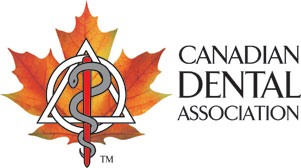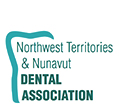Listed below are answers to commonly asked questions about gum disease, such as how it starts and what the early signs of the disease are. Select a question to view the Canadian Dental Association's (CDA) response.
Fluoride is a mineral found in soil, water (both fresh and salt) and various foods.
2. How does fluoride prevent tooth decay?
Fluoride has a positive effect on oral health by making teeth more resistant to decay. Fluoride can also prevent or even reverse tooth decay that has started.
3. Where do I get the fluoride that prevents tooth decay?
For many Canadians, fluoride is in public drinking water, which provides protection to the entire community. Fluoride toothpastes and rinses are available for purchase, and your dentist can provide professional fluoride products such as gels and varnish.
Dental fluorosis is a change in the appearance of teeth. It is caused when higher than optimal amounts of fluoride are ingested in early childhood. In its mildest and most common form, it affects the look of the tooth with small white specks appearing on a child’s teeth.
5. Is dental fluorosis a concern in Canada?
The Canadian Health Measures Survey 2007-2009 found that dental fluorosis is not an issue of concern for the vast majority of children (84%). Some children (16%) have mild forms of fluorosis that often go unnoticed by both the children and their parents.
6. What is water fluoridation?
Water fluoridation is the process of adjusting the level of fluoride in a public drinking water supply to optimize the dental benefits of preventing tooth decay.
7. Why is fluoride added to the public drinking water if it is available in other ways?
Fluoride is added to public drinking water to protect all members of the community from tooth decay. Community water fluoridation is a safe and effective way of preventing tooth decay at a low cost.
8. Who watches the fluoride levels in the drinking water?
The Federal-Provincial-Territorial Committee on Drinking Water makes recommendations about the optimal level of fluoride in public drinking water to prevent tooth decay. The recommended level takes into account that Canadians receive fluoride from other sources such as food and beverages.
9. What does an “optimal” level of water fluoridation mean?
An optimal level of water fluoridation is achieved by adjusting the level of fluoride in the water to achieve the right balance between the benefit of preventing tooth decay and the risk of developing dental fluorosis.
10. Are there any health risks associated with water fluoridation?
With the exception of dental fluorosis, scientific studies have not found any credible link between water fluoridation and adverse health effects.
11. Should I be using fluoridated toothpaste with my child?
For children from birth to 3 years of age, the use of fluoridated toothpaste is determined by the level of risk of tooth decay. Parents should consult a health professional to determine whether their child up to 3 years of age is at risk of developing tooth decay. If such a risk exists, the child’s teeth should be brushed by an adult using a minimal amount (a portion the size of a grain of rice) of fluoridated toothpaste. Use of fluoridated toothpaste in a small amount has been determined to achieve a balance between the benefits of fluoride and the risk of developing fluorosis. If the child is not considered to be at risk, the teeth should be brushed by an adult using a toothbrush moistened only with water.
For children from 3 to 6 years of age, only a small amount (a portion the size of a green pea) of fluoridated toothpaste should be used. Children in this age group should be assisted by an adult in brushing their teeth.
12. Why do young children need to be assisted or supervised with tooth brushing?
Young children tend to swallow toothpaste when they are brushing, which may increase their exposure to fluoride and contribute to dental fluorosis. For this reason, children need to be assisted or supervised with tooth brushing. An adult needs to ensure that an appropriate amount of toothpaste is used, that the child spits out the toothpaste rather than swallows it, and that the teeth are cleaned effectively.
13. How do I know if my child is getting enough fluoride protection?
Your dentist is able to assess your child’s risk of developing tooth decay and advise you of an appropriate level of fluoride protection.











